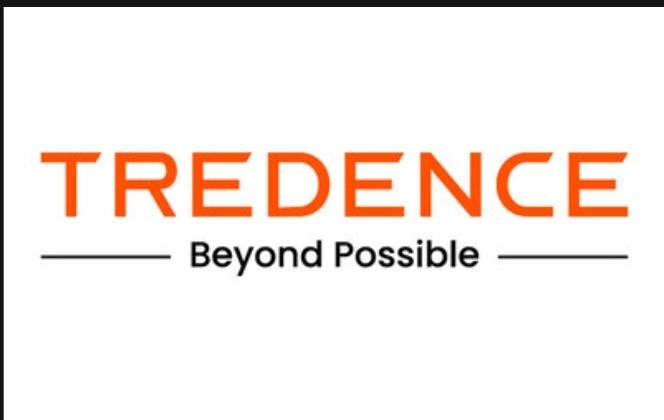Have you ever wondered why most AI initiatives fail to scale? Despite billions invested in AI pilots, most organizations struggle to move beyond experimentation. Today, however, this challenge takes on new urgency as enterprises grapple with the transition from isolated AI projects to enterprise-wide transformation.
The AI Scaling Crisis That No One Talks About
Most CDAOs face a frustrating reality. While their teams successfully implement AI pilots, scaling these initiatives across the organization remains elusive. In fact, studies show that 85% of AI projects never reach production. This stat reveals a deeper problem than most leaders recognize.
The issue isn’t technological limitations. Instead, it’s organizational readiness. Traditional business structures simply weren’t designed for AI-first operations. When machines become decision-makers, existing workflows become obsolete. Furthermore, most leadership models fail to address human-machine collaboration effectively.
Tredence Game-Changing Response
Recently, Tredence launched the Agentic AI Playbook to address these exact challenges. Unlike typical AI reports focused on tools and trends, this playbook offers a contrarian perspective. The biggest risk with AI isn’t misuse—it’s underuse due to outdated organizational design.
This strategic guide targets CDAOs and AI leaders navigating the transition from pilots to enterprise-scale modernization. Moreover, the playbook challenges the prevailing focus on tools and models. Instead, it urges leaders to address the fundamental question: How must organizations evolve when AI agents become central to decision-making?
Why Traditional AI Approaches Fall Short
Sumit Mehra, Co-founder and CTO of Tredence, explains the core issue: “Many Agentic AI discussions today are still tactical—focused on use cases, models, and tools. But leaders don’t scale strategy through pilots.”
This observation highlights a critical gap in current AI strategy. Most organizations treat AI as a bolt-on solution rather than a transformative force. Consequently, they fail to reimagine workflows, decision rights, and business models effectively.
The playbook is built for those designing organizations where humans and machines are peers in decision-making. This shift requires new mental models, not just new tech. Therefore, successful AI implementation demands fundamental organizational restructuring.
The Five Strategic Lenses That Transform Organizations
The Agentic AI Vision Playbook is anchored in five strategic lenses that address enterprise modernization holistically:
Business Value Realization forms the foundation. This lens focuses on structuring AI initiatives to deliver measurable ROI. Additionally, it emphasizes sustaining stakeholder engagement and maximizing long-term value creation.
Human + AI Agents = Co-Intelligence redefines human roles in an AI-automated world. This perspective ensures alignment between human strategy and machine execution. Moreover, it addresses the critical question of when humans should stay in, oversee, or step back from the loop.
Business Process Reengineering leverages decision intelligence and Agentic AI systems to automate and optimize workflows. This approach transforms end-to-end processes rather than simply automating individual tasks.
Technology Evolution addresses emerging AI innovations including quantum computing, brain-computer interfaces, and domain-specific AI models. This lens ensures organizations remain adaptable to technological changes.
Governance & Compliance creates agile compliance frameworks that embed responsible AI principles. Furthermore, it integrates new regulations while scaling AI adoption across organizations and ecosystems.
The Three-Phase Maturity Model
Each strategic lens is mapped across three phases of organizational maturity:
Now defines what leaders must act on in the next 12 months. This phase focuses on immediate organizational changes and quick wins.
New outlines how operating models and systems evolve in 2 to 3 years. This phase addresses medium-term transformation requirements.
Next describes what long-term leadership looks like in AI-native organizations. This phase envisions fully integrated human-machine collaboration.

Real-World Validation and Industry Insights
The playbook distills insights from Tredence cross-industry work with Fortune 500 clients. Furthermore, it was co-developed with perspective from executives at Mars, Nestlé, Casey’s, Databricks, Google Cloud, Snowflake, Forrester, and IDC.
This collaborative approach ensures the playbook addresses real enterprise challenges. Additionally, it provides proven strategies to embed AI agents across organizations—streamlining supply chains, strengthening data governance, and transforming customer experiences through real-time insights and automation.
The Critical Success Factor Most Leaders Miss
Soumendra Mohanty, Chief Strategy Officer at Tredence, identifies the primary failure point: “We’ve seen AI pilots fail not due to technology, but because organizations weren’t ready—lacking clear decision structures, governance, and accountability for human-machine collaboration.”
This insight reveals why technical excellence alone cannot drive AI success. Instead, organizational readiness becomes the determining factor. As AI agents take on more decisions, leaders must rethink fundamental operational principles.
The playbook guides leaders to build the right systems, teams, and mindsets to scale GenAI successfully. Therefore, it addresses both technological and organizational transformation requirements.
The Path Forward for Enterprise Leaders
The Agentic AI Playbook represents more than strategic guidance—it’s a blueprint for organizational evolution. As enterprises move beyond experimentation, they need frameworks that address the complexity of AI-driven transformation.
This playbook challenges outdated leadership models while providing practical implementation strategies. Moreover, it recognizes that successful AI adoption requires fundamental shifts in how organizations operate.
The transformation ahead demands new thinking about human-machine collaboration, decision-making structures, and business model innovation. Therefore, leaders who embrace this change will position their organizations for sustainable competitive advantage.
Getting Started with Enterprise AI Transformation
For CDAOs and AI leaders ready to move beyond pilots, the Agentic AI Playbook provides the strategic foundation needed for success. The comprehensive guide addresses both immediate implementation needs and long-term transformation requirements.
This resource empowers leaders to build AI-native organizations that leverage human-machine collaboration effectively. Furthermore, it provides the framework needed to navigate the complex transition from AI experimentation to enterprise-scale modernization.
The future belongs to organizations that can successfully integrate AI agents into their decision-making processes. Therefore, the question isn’t whether to adopt AI—it’s how to transform your organization to thrive in the AI-driven future.
The full Agentic AI Playbook is available for download here.

